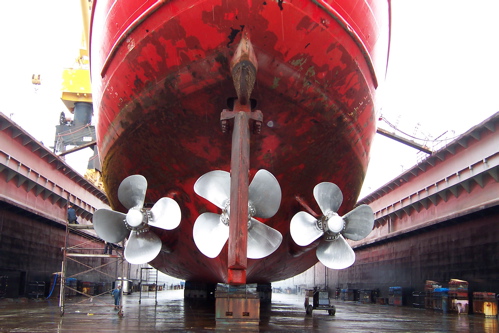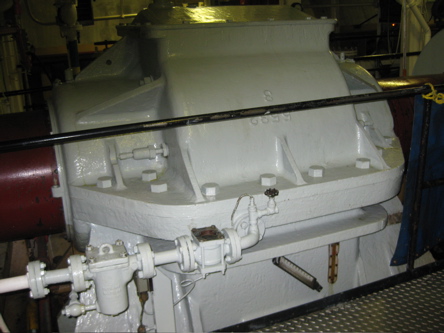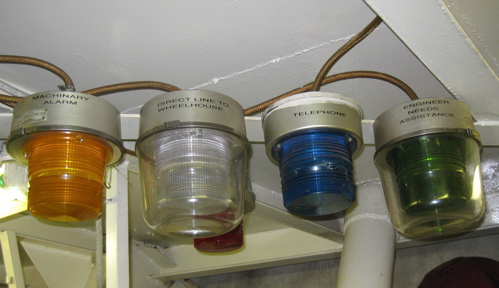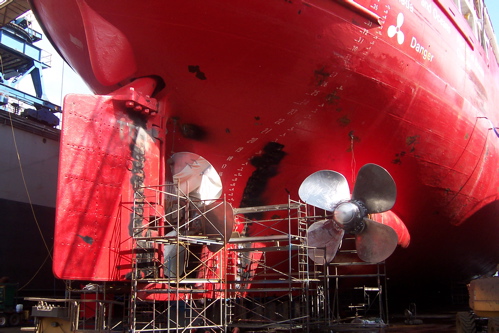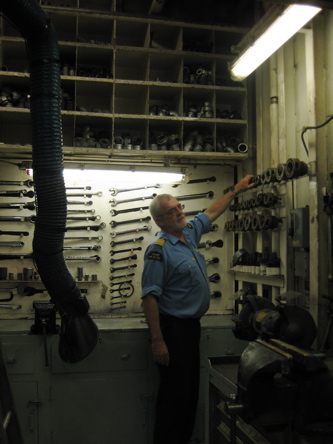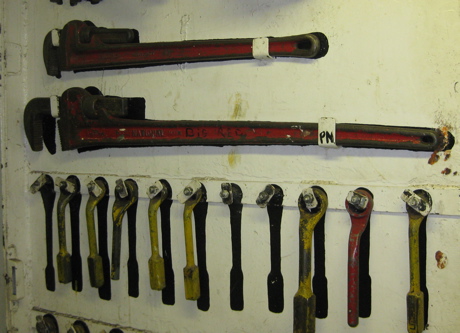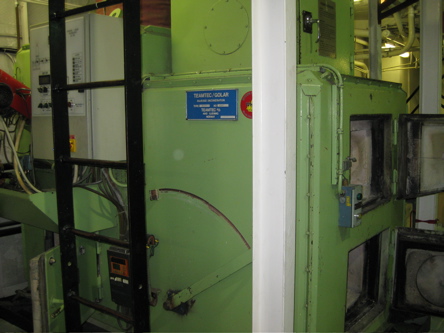Gety WardJuly 26, 2008Chief Engineer Don Stortts kindly gave us an engine systems tour today. Don has been going to sea for 36 years, and he clearly knows this ship. His knowledge and enthusiasm made the tour truly fascinating. Here is what I learned. The LSSL is propelled by a diesel/ electric motor system. Diesel fuel is used to power five generators producing 6600 volts AC each. This voltage is converted to 900 volts DC to run three motors, each powering one of three propellers. Each propeller is 4575mm (about 15 feet) in diameter and weighs 24,634 kg (about 54,000 pounds). The ship weighs 13000 tons. Question: Why does it float?
The ship can carry 3.6 million liters of fuel, and needs a 7000-liter oil change at least every 5000 hours. Just in case, the LSSL carries 60,000 liters of extra oil.....The thrust developed by the propeller is transferred to the ship via the thrust box. It seems quite small and inconsequential for its major role in ship movement. There are three, one on each propeller shaft. Question: what would happen if the thrust was NOT transferred to the ship? The engine room is loud. Hearing protection must be worn at all times. Watch the video on my PolarTREC site to get a glimpse of this place. The rudder steers the ship. On an icebreaker, there are extra features such as ice horn above to deflect ice away from the rudder stock (the post). The rudder stop keeps the rudder from being defected too far over if it is pushed by a hunk of ice. Yes, hunks of ice can weigh more than the ship.
The Engineering team can do almost anything. They carry tools, spare parts and the knowledge to repair and maintain every part of the ship. And, if they do not have a part, they can make it.
The ship's distiller use the steam from the boiler to boil the water. This process is done under a vacuum to lower the boiling point to about 70C so it requires less input energy. But this is not hot enough to sterilize, so chlorine is added to 0.2/0.5 parts per million (just like municipal water supplies). The ship is currently using about 20 tons of water a day. All garbage is burned, except hazard waste and recyclables. The incinerator works 24/7 just like the crew.
After our tour, Don answered our many questions. Thank you Don! He left us with this thought: "What good is an ice breaker without an ice maker?" All photos by PolarTREC teacher Gerty Ward unless indicated. Last updated: October 7, 2019 | |||||||||||||||||||||||||||||||
Copyright ©2007 Woods Hole Oceanographic Institution, All Rights Reserved, Privacy Policy. | |||||||||||||||||||||||||||||||


